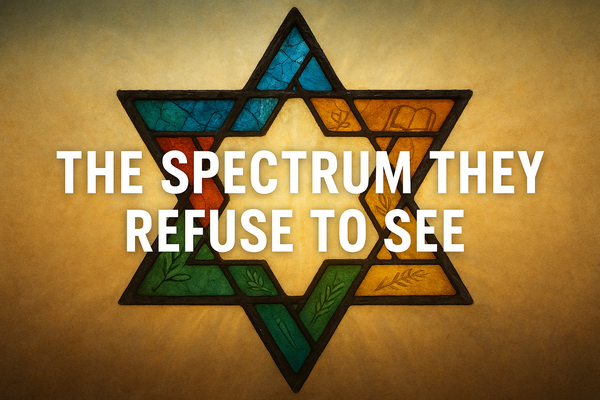XRP: Value Proposition and Its Position in the Cryptocurrency Landscape

Cryptocurrencies are often compared, but not all projects serve the same purpose. While Bitcoin (BTC) is widely recognized as a decentralized store of value, XRP focuses on transforming cross-border payments with speed and cost-efficiency. But as Bitcoin continues to innovate and expand its functionality through second-layer solutions like the Lightning Network, the lines between XRP’s niche and Bitcoin’s capabilities are beginning to blur.
This raises important questions: Is XRP’s value proposition still unique, or is Bitcoin poised to accomplish similar goals using a more neutral and public protocol?
The Value Proposition of XRP
XRP was designed to address specific inefficiencies in global payments, particularly in cross-border remittances. It offers a robust solution for high-speed, low-cost transactions while serving as a bridge asset for transferring value across currencies.
Key Features of XRP:
1. Speed: XRP transactions settle in 3-5 seconds, outpacing Bitcoin’s average block confirmation time of 10 minutes.
2. Low Costs: Transaction fees on the XRP Ledger are fractions of a cent, making it ideal for international remittances and microtransactions.
3. Scalability: XRP processes up to 1,500 transactions per second (TPS), significantly more than Bitcoin’s current capacity of about 7 TPS.
4. Bridge Asset: XRP enables seamless currency conversion, reducing the need for pre-funded accounts in cross-border transactions.
5. Institutional Partnerships: Ripple, the company behind XRP, has collaborated with banks and financial institutions globally to optimize payment systems and improve liquidity.
Ripple’s Platform: Innovating Within Constraints
Ripple’s platform, RippleNet, is designed to modernize banking by enabling real-time, low-cost international payments. Its use of XRP as a liquidity tool eliminates the need for banks to maintain large reserves in foreign currencies.
However, Ripple faces stiff competition from the entrenched dominance of SWIFT, the leading global payments network. With over 11,000 financial institutions in its ecosystem, SWIFT has a network effect that is difficult to displace. Moreover, SWIFT is evolving, incorporating features like instant settlements and reduced fees to counter competition from blockchain-based solutions like Ripple.
While Ripple’s technology is innovative, its reliance on partnerships with traditional financial institutions may limit its adoption as a truly transformative solution.
Bitcoin’s Lightning Network: A Neutral Alternative
One of the most significant challenges to XRP’s value proposition comes not from SWIFT but from Bitcoin’s Lightning Network, a second-layer payment protocol built on Bitcoin. The Lightning Network enhances Bitcoin’s scalability and transaction speed, addressing some of the same pain points Ripple seeks to solve.
Why Bitcoin’s Lightning Network Is a Game-Changer:
1. High Speed: Lightning enables instant payments by conducting transactions off-chain while settling them on Bitcoin’s secure blockchain.
2. Low Costs: Like XRP, the Lightning Network dramatically reduces transaction fees, making Bitcoin viable for microtransactions and remittances.
3. Neutral and Public Protocol: Unlike Ripple, which is heavily influenced by Ripple Labs, Bitcoin and the Lightning Network are decentralized and permissionless, ensuring that no single entity controls their development or use.
4. Global Adoption Potential: Bitcoin’s widespread recognition and neutrality make it an attractive choice for both individuals and institutions seeking a more public and trustless payment network.
As the Lightning Network grows, Bitcoin becomes more versatile—not just as a store of value but also as a tool for fast and affordable payments. This directly challenges Ripple’s claim to be the go-to solution for cross-border transactions.
XRP vs. Bitcoin: Competition or Complement?
XRP and Bitcoin differ in their original designs, but innovations like the Lightning Network blur the distinctions between the two.
Use Cases:
• Bitcoin remains the preeminent decentralized digital currency and a store of value, often referred to as “digital gold.”
• XRP targets financial institutions seeking efficiency in cross-border payments, but Bitcoin’s emerging payment capabilities threaten to overlap with this niche.
Decentralization:
Bitcoin’s proof-of-work consensus ensures unparalleled decentralization and censorship resistance. XRP’s consensus algorithm relies on a set of trusted validator nodes, raising questions about its decentralization and neutrality.
Adoption:
Bitcoin’s network effects and global trust as a neutral protocol make it more adaptable for both individual and institutional use. Ripple’s XRP, while innovative, depends on partnerships and faces regulatory scrutiny, which can hinder broader adoption.
The Role of Ripple in the Future of Global Payments
Ripple’s platform offers valuable tools for financial institutions, but its long-term success may be limited by two factors: SWIFT’s adaptability and Bitcoin’s expanding functionality. While RippleNet is a compelling solution, SWIFT’s ability to integrate instant payments and low-cost features into its existing infrastructure poses a significant challenge.
Additionally, Bitcoin’s Lightning Network introduces a more decentralized and public alternative to Ripple’s solutions. By offering a neutral payment network free from corporate influence, Bitcoin has the potential to achieve Ripple’s goals on a global scale without the constraints of centralized control.
Conclusion: XRP’s Niche Is Narrowing
XRP’s value proposition is rooted in speed, cost efficiency, and institutional adoption. However, its uniqueness is diminishing as innovations like Bitcoin’s Lightning Network bring similar capabilities to a more neutral and decentralized platform.
While XRP and RippleNet may continue to serve niche markets or complement traditional systems, their ability to dominate the cross-border payments space is questionable given the competition from both SWIFT and Bitcoin. Ultimately, Ripple’s platform highlights the potential of blockchain in global finance, but its success will depend on carving out a niche that neither SWIFT nor Bitcoin can easily replicate.
Disclaimer:
The information provided on dnalevity.com is for educational and informational purposes only and should not be considered as financial advice. We do not offer investment recommendations or endorse any specific investment or financial strategy. All content is presented without warranty, and readers are encouraged to conduct their own research and consult with a professional financial advisor before making any investment decisions. dnalevity.com and its contributors will not be held liable for any losses or damages resulting from the use of this information. Remember, all investing involves risk, including the potential loss of principal.
Listen to the Podcast






